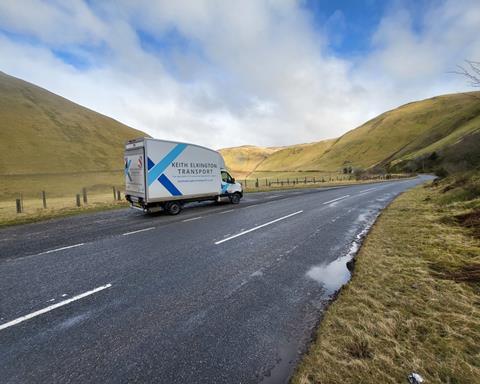Foodservice equipment haulier Keith Elkington Transport is relying on telematics to cut its carbon footprint after ruling out electric vehicles due to the weight of its freight.
The company operates eight HGVs and 28 3.5-tonne Luton Box vans, all needing to be tall enough to carry large, heavy payloads such as refrigeration units, cooking suites and pizza ovens.
“Operating an environmentally-friendly fleet is a top priority for us,” said Oli Elkington, MD at Keith Elkington Transport.
“However, due to the heavy payload nature of our business and our nationwide delivery schedule, transitioning to an electric fleet wasn’t a viable option at this time.”
Elkington said the business had already invested in Sprinter chassis cab vans, which are 60kg lighter than previous models and have a more aerodynamic body.
But it also opted for an integrated Webfleet telematics and video camera system solution as well, to enhance driver safety and drive down the company’s carbon footprint.
“With Webfleet’s OptiDrive 360 functionality, we can now monitor the quality of driving out on the road, with real-time feedback in the cab helping our drivers operate much more efficiently,” he said.
“We can track and address incidents of harsh braking, speeding and harsh cornering as well as idling. Far from feeling watched over, our drivers have welcomed the move and it’s encouraged some healthy competition on who is improving fastest.”

Jonny Wiggins of system installers Fleet Trak added: “This is an excellent example of how conventional van fleets can still achieve significant carbon reductions without having to go electric.
“With Webfleet now sitting at the heart of their drive to cut carbon emissions, Keith Elkington Transport is anticipating a significant dip in future fuel costs.”
The company has also installed front and rear facing Mantis cameras to its HGVs, enabling it to gain FORS silver accreditation and the minimum three-star DVS rating that will be required in central London from 28 October.














